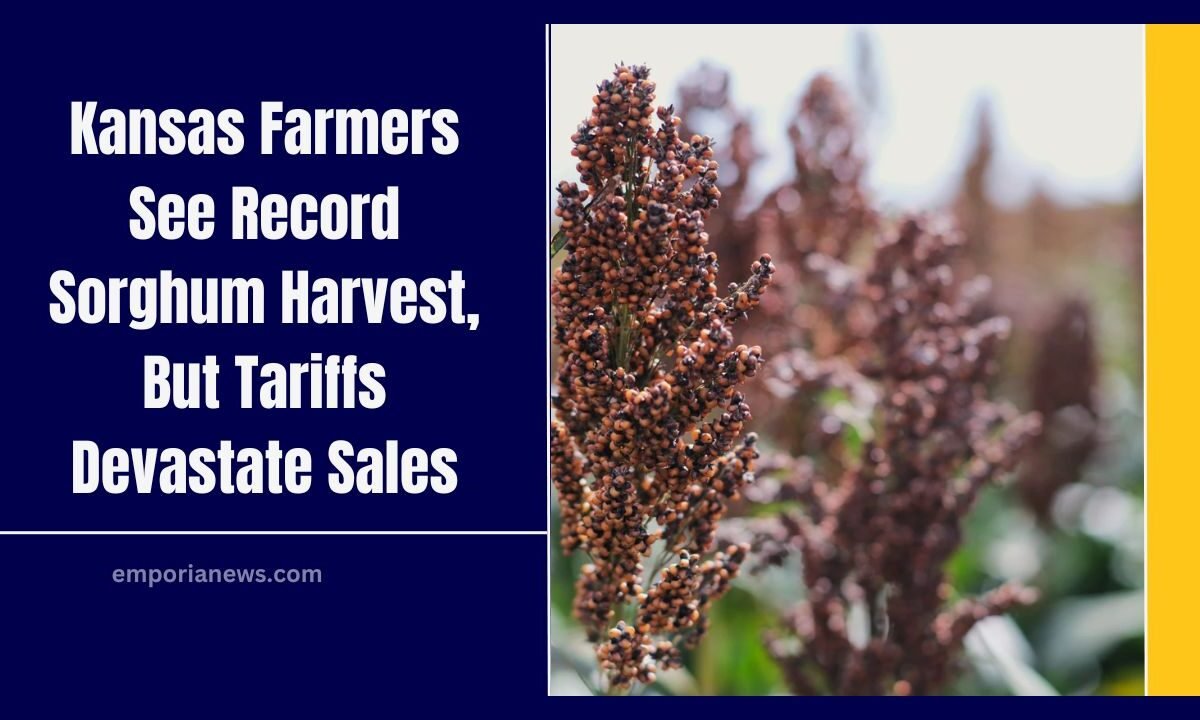This season, Kansas sorghum farmers are poised for one of their best yields in years, aided by increased rainfall and easing drought conditions.
But for many producers, the promise of a bumper crop is undercut by a cratering market — thanks to tariffs that have slashed sorghum exports, especially to China. The result: farmers facing record output with little ability to sell.
A Crop in Bloom — and a Market in Freefall
Fields across western Kansas are turning amber as sorghum heads mature. Many farmers say the current crop is their strongest in a decade. For example, one farm near Scott City expects output to be 23% higher than last year, thanks to more rain and reduced drought stress.
Indeed, for the first time since 2016, roughly 80% of Kansas is free of drought conditions, offering ideal growth conditions for sorghum growers.
Yet despite the strong harvest, prices are collapsing because of lost export markets.
How Prices Fell Through the Floor
Sorghum’s viability in Kansas depends heavily on global demand. Over half the state’s crop is traditionally sold abroad — primarily to China, where sorghum is used for animal feed and production of spirits like baijiu.
However, as U.S.–China trade tensions escalated, sorghum exports to China plunged by an estimated 95% this year. One major agricultural analysis noted U.S. exports to China are down about 97% compared to last year.
Price comparisons illustrate the damage:
| Metric | 2022 Price | Current Price | Approx. Revenue Shift |
|---|---|---|---|
| Price per bushel | ~$6.00 | ~$3.00 | −50% |
| Revenue per acre | ~$400 | ~$200 | −$200 loss per acre |
| Export collapse | — | China demand down ~95–97% | Major demand collapse |
Farmers say they are caught in the worst of both worlds — excellent yields but no demand.
The Tariff Play’s Ripple Effects
China’s retreat from U.S. sorghum stems from its retaliation on U.S. tariffs. In response to those tariffs, Chinese buyers have pivoted toward Brazil and Australia, which now dominate the Chinese market.
Economists warn that this shift may not be temporary — the new supply relationships risk locking the U.S. out of its former stronghold. One grain specialist cautions that the surplus sorghum may never command previous prices, especially as global supply chains reconfigure around new producers.
Meanwhile, some U.S. farms are redirecting excess crop to Mexico, Europe, or domestic feedlots, but most of that is at deep discounts, with little margin left for farmers.
What This Means for Kansas Farmers
The consequences are stark:
- Many farmers may fail to break even, even with record yields
- Storage facilities are filling up, causing basis to widen (the price gap between local and export prices)
- Some rural areas may see declines in farm spending, impacting local economies, co-ops, and equipment dealers
- Elevated financial stress could lead to shifting acreage toward more resilient or domestic-focused crops
One veteran farmer put it plainly: “We’ve got all this grain piling up — what are we going to do with it?” The phrase captures the heart of the crisis facing sorghum growers this harvest.
Looking Ahead: What’s Next?
Survival will depend on several moves:
- Trade negotiations: Restoring access to China or forging new agreements with emerging importers like India or Southeast Asia
- Market diversification: Expanding domestic use, perhaps in food, biofuel, or processed sorghum products
- Government support: Emergency aid, price supports, or export incentives to buffer the collapse in foreign demand
Many in the industry note that Kansas’s comparative advantage in dryland crops must not be abandoned — but it demands stable market access to be viable long term.
Kansas sorghum farmers are now watching a paradox play out: the best yields in years coupled with one of the worst export markets in memory. Export tariffs, particularly those impacting China, have decimated demand and halved prices.
Without urgent trade fixes or new market development, many growers may not recover despite their crop’s success. The 2025 harvest will be a test of resilience for Kansas’s agricultural economy, and what happens next could reshape the sorghum industry for years.




